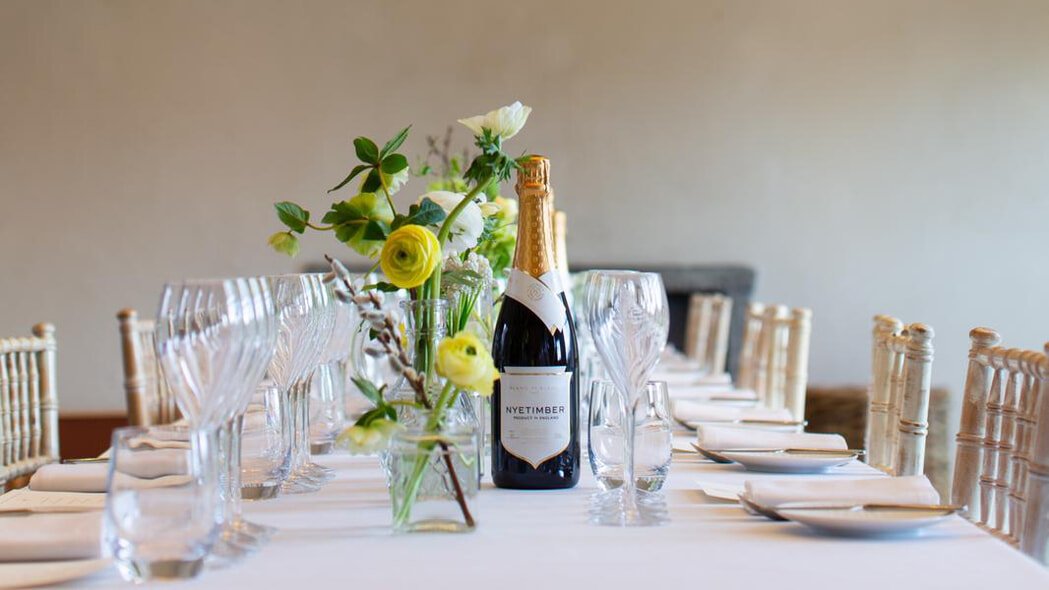The World's Best Sommelier Has Just Shared His Favourite English Wines
English wines have been on the increase at a remarkable rate over the past few years; not only gaining recognition domestically but also across the seas. Wines from England are beginning to see notoriety on the international stage. Our diverse and unique combination of soil types and cool climate has been identified and appreciated by skilled winemakers across the globe - with many relocating to be at the forefront of the English Wine sector as it continues to rise. With both traditional and more unique winemaking methods being utilised and introduced, English wines are finally gaining well-deserved recognition in the global wine market as a significant player and not one to be underestimated. English sparkling wine is often compared to their renowned counterparts: Champagne and both red and white stills’ are highlighting meticulous attention to detail resulting in a beautiful bottle, vintage after vintage.
With over 45 counties within the UK, including Kent, Surrey, Hampshire, and Sussex producing exceptional and award-winning wines, it’s an exciting time for many wine enthusiasts around the world. Each vineyard comes complete with exceptional craftsmanship and unique flavour profiles for their wines so knowing where to start on your English Wine Journey can be a little daunting.
So, with the help of luxury appliance brand, ASKO, we have asked world-renowned sommelier, Andreas Larsson, all about English Wines as well some of his personal favourites.
Andreas Larsson
What is making English Wine stand out now more than ever before?
“Even though the English Wine business is still a relatively young business, it has matured significantly. The growers within the UK are more confident in what they want to achieve in both viticultural and wine-making practices. Each year the vineyards have also gained maturity as the older vines are giving better fruit.”
what varieties and styles would you recommend?
“Traditional English sparkling wines are tremendously good and considered an established style. One of my favourite producers is Gusborne, who produces lovely pure and stylish wines, similar to Nyetimber with a magnificent range of bubbles.”
Gusbourne
What regions produce the best English wines and are there any to watch out for?
“Sussex which accounts for roughly a fourth of English wine is generally considered the leading region together with Kent. Both regions with their slightly warmer climate (compared to the rest of England) and the chalky soils vouch for great potential. The renowned producer Taittinger was the first Champagne house to invest in Kent back in 2015. As the saying goes – if we can´t beat them, join them!”
Who are the standout British wine producers you’re enjoying right now?
“As mentioned, one of my favourite producers is Gusborne who produces lovely pure and stylish wines. However, if you prefer a still wine, I recommend Chapel Down and Hush Heath as they produce some spectacular tasting bottles too.”
Nyetimber
If you were going to a party - what wine would you bring?
“English sparkling of course! It’s a wonderful style of wine which has reached a very good quality level, and the perfect accompaniment for a celebratory canapé. The 2014 Nyetimber blanc de blancs is a great choice!”
How should I store my English wine?
“An important factor to take into account when serving wine is to make sure the drink is stored correctly. Not only is the temperature important to control but also the humidity. The storing environment should correspond to the humidity of a natural cellar, free of vibrations and light.
The recommended temperature for serving red wine is between 12˚C and 18˚C whereas the ideal temperature for white wine is between 8˚C and 12˚C.
ASKO
Andreas Larsson credits ASKO’s Wine Climate Cabinet as being a perfect option for consumers to store their wine.“The benefit of having a wine climate cabinet is to be able to store your wine under perfect conditions. What I really like about the wine climate cabinet is the serving area. This enables you to keep the bottles at the right temperatures and even store your glasses and utensils. Plus, you can set the light, and change the warmth, the colour, and the intensity, to fit your mood, to fit your environment. And this means that you can put the wine climate cabinet anywhere in your home.”



